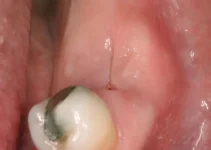Endometrial receptivity plays a crucial role in successful embryo implantation during fertility treatments. Various evidence-based strategies can enhance the uterine environment, including hormonal supplementation, lifestyle modifications, and specialized medical interventions. Understanding these methods is essential for patients undergoing fertility treatments, as optimal endometrial conditions significantly increase the chances of successful pregnancy outcomes.
Understanding Endometrial Receptivity
Endometrial receptivity refers to the crucial biological state when the uterine lining becomes receptive to embryo implantation. This complex process involves precise molecular and cellular changes that create an optimal environment for successful pregnancy. The endometrium undergoes significant transformations throughout the menstrual cycle, but only becomes truly receptive during a specific timeframe known as the implantation window.
Research has shown that successful implantation depends on a delicate balance of various factors, including hormones, growth factors, and adhesion molecules. The endometrium must achieve the right thickness and vascularity while expressing specific proteins and receptors that facilitate embryo attachment. Modern assisted reproductive technologies like PRGF-Endoret® have demonstrated remarkable success in optimizing these conditions.
The Window of Implantation
The implantation window typically occurs between days 20-24 of a natural menstrual cycle, approximately 7-9 days after ovulation. During this period, the endometrium exhibits specific characteristics that make it most receptive to an incoming embryo. Understanding and identifying this optimal timing is crucial for both natural conception and assisted reproductive procedures.
Hormonal Changes
The window of implantation is characterized by specific hormonal patterns, primarily driven by estrogen and progesterone. These hormones trigger essential changes in the endometrial tissue:
- Increased progesterone levels promote endometrial secretory changes
- Enhanced expression of growth factors and cytokines
- Activation of specific immune cells that support implantation
- Modification of the endometrial surface proteins
Endometrial Dating
Modern reproductive medicine employs various techniques to assess endometrial readiness. These include:
- Ultrasound monitoring of endometrial thickness and pattern
- Endometrial biopsy for histological analysis
- Advanced molecular testing for receptivity markers
- Novel treatments like PRGF-Endoret® that can increase endometrial thickness by up to 33%
Molecular Markers of Receptivity
The identification of molecular markers has revolutionized our understanding of endometrial receptivity. These biomarkers serve as indicators of optimal implantation conditions and include various proteins, growth factors, and adhesion molecules. PRGF-Endoret® treatment has been shown to enhance the expression of key markers, particularly VEGF, which promotes essential angiogenesis.
Pinopodes
Pinopodes are specialized cellular structures that appear on the endometrial surface during the window of implantation. These microscopic protrusions play a vital role in embryo-endometrial communication and attachment. Research indicates that treatments enhancing pinopode formation can significantly improve implantation success rates.
Adhesion Molecules
Adhesion molecules are crucial proteins that facilitate the attachment of the embryo to the endometrial surface. These include integrins, selectins, and various cell adhesion molecules (CAMs). The proper expression and timing of these molecules are essential for successful implantation, and modern treatments focus on optimizing their presence during the critical implantation window.
For more detailed information about improving endometrial receptivity and the latest advances in reproductive medicine, we encourage you to explore our related articles on assisted reproductive technologies and fertility optimization methods. Understanding these crucial aspects of reproduction can significantly impact your fertility journey.
Lifestyle Modifications for Enhanced Receptivity
Making strategic lifestyle modifications can significantly improve endometrial receptivity and increase the chances of successful embryo implantation. Research shows that optimal endometrial health is crucial for achieving pregnancy, with studies indicating that lifestyle factors can influence endometrial thickness by up to 33% when combined with treatments like PRGF-Endoret®.
The key to enhancing endometrial receptivity lies in adopting a comprehensive approach that includes proper nutrition, stress management, and appropriate physical activity. Scientific evidence supports that these modifications can positively impact the expression of growth factors, particularly VEGF, which is essential for proper endometrial development.
Dietary Interventions
A well-balanced diet plays a crucial role in optimizing endometrial health. Studies have shown that certain dietary patterns can significantly influence endometrial thickness and receptivity. Mediterranean-style eating patterns have been particularly associated with improved reproductive outcomes.
Nutritional Supplements
Key supplements that support endometrial health include:
- Vitamin E – Supports endometrial growth
- Vitamin D3 – Essential for implantation
- Omega-3 fatty acids – Reduces inflammation
- L-arginine – Improves blood flow
- CoQ10 – Enhances cellular energy
Anti-inflammatory Foods
Incorporating anti-inflammatory foods can help create an optimal environment for implantation. Research demonstrates that these foods can help reduce excessive fibrosis and promote healthy tissue development.
Key anti-inflammatory foods include:
- Leafy green vegetables
- Berries and citrus fruits
- Fatty fish rich in omega-3s
- Nuts and seeds
- Extra virgin olive oil
Stress Management
Stress management is crucial as elevated cortisol levels can negatively impact endometrial receptivity. Clinical studies have shown that chronic stress can interfere with the production of growth factors necessary for optimal endometrial development.
Relaxation Techniques
Effective stress reduction practices include:
- Mindfulness meditation – 15-20 minutes daily
- Deep breathing exercises
- Progressive muscle relaxation
- Gentle yoga practice
- Guided imagery sessions
Exercise Guidelines
Physical activity should be moderate and carefully balanced during treatment. Research indicates that gentle exercise can improve blood flow to the reproductive organs while avoiding high-intensity activities that might interfere with implantation.
For optimal results, consider:
- Walking 30 minutes daily
- Light stretching
- Gentle swimming
- Modified yoga poses
To learn more about optimizing your fertility journey and exploring advanced treatments like PRGF-Endoret®, we encourage you to explore our related articles on endometrial preparation techniques and innovative fertility treatments. Our comprehensive resources will help you make informed decisions about your reproductive health journey.
Medical Interventions
Medical interventions for enhancing endometrial receptivity have evolved significantly in recent years, offering new hope for patients struggling with implantation issues. Modern reproductive medicine now employs a comprehensive approach combining traditional hormonal treatments with innovative therapeutic options.
The success of embryo implantation heavily depends on the synchronization between embryo development and endometrial receptivity. Scientific evidence shows that proper medical intervention can increase implantation rates by up to 40% in previously unsuccessful cases.
Key factors that medical interventions target include:
- Endometrial thickness optimization
- Blood flow improvement
- Inflammatory response regulation
- Tissue regeneration promotion
Hormonal Treatments
Progesterone Supplementation
Progesterone plays a crucial role in endometrial preparation for implantation. This hormone transforms the endometrium from a proliferative to a secretory state, creating an optimal environment for embryo implantation.
Clinical studies demonstrate that proper progesterone supplementation can:
- Enhance endometrial receptivity
- Support early pregnancy maintenance
- Reduce the risk of early pregnancy loss
Estrogen Therapy
Adequate estrogen levels are essential for achieving optimal endometrial thickness. Research indicates that estrogen therapy can increase endometrial thickness by 20-30% when administered appropriately. The benefits of estrogen therapy include:
- Enhanced endometrial growth
- Improved vascularization
- Better implantation rates
Advanced Treatments
Endometrial Scratching
Endometrial scratching is a minimally invasive procedure that creates a controlled injury to the endometrium. This process triggers a local inflammatory response that can enhance implantation rates in subsequent cycles.
Studies show that endometrial scratching may increase pregnancy rates by:
- Stimulating growth factors release
- Enhancing endometrial receptivity
- Improving embryo-endometrial synchronization
PRP Treatment
PRGF-Endoret® represents a significant advancement in reproductive medicine. This innovative treatment can increase endometrial thickness by up to 33% through the stimulation of endometrial fibroblast proliferation and motility.
The key benefits of PRGF-Endoret® treatment include:
- Enhanced angiogenesis through VEGF expression
- Reduced scar tissue formation
- Protection against excessive fibrosis
- Improved endometrial conditioning for embryo implantation
For more comprehensive information about endometrial receptivity and treatment options, we encourage you to explore our related articles on hormonal therapy protocols and innovative reproductive technologies. Understanding these advanced treatment options can help you make informed decisions about your fertility journey.
Monitoring and Assessment
Tracking endometrial receptivity is a crucial aspect of fertility treatment success. Modern reproductive medicine employs various sophisticated methods to monitor endometrial development and assess its readiness for embryo implantation. PRGF-Endoret® treatment monitoring has shown remarkable improvements in endometrial conditioning, with studies indicating up to 33% increase in endometrial thickness. The assessment process typically involves a combination of diagnostic tools and regular monitoring throughout the treatment cycle. This comprehensive approach allows fertility specialists to optimize the timing of embryo transfer and maximize the chances of successful implantation. Regular monitoring is essential as it helps identify and address any potential issues early in the treatment process.
Diagnostic Tools
Modern reproductive medicine relies on several advanced diagnostic tools to evaluate endometrial receptivity. These tools provide detailed information about the endometrium’s structural and functional characteristics, helping clinicians make informed decisions about treatment timing and approach.
- Molecular diagnostic tools
- Imaging technologies
- Biochemical markers
- Histological assessment methods
ERA Testing
The Endometrial Receptivity Array (ERA) test represents a breakthrough in personalized reproductive medicine. This molecular diagnostic tool analyzes the expression of 238 genes involved in endometrial receptivity, providing a precise assessment of the optimal implantation window. ERA testing has shown to significantly improve implantation rates, particularly in patients with repeated implantation failure.
When combined with PRGF-Endoret® treatment, ERA testing helps optimize the timing of treatment administration and embryo transfer, maximizing the benefits of growth factors on endometrial conditioning.
Ultrasound Monitoring
Ultrasound monitoring serves as a fundamental tool in tracking endometrial development. Through high-resolution imaging, clinicians can assess endometrial thickness, pattern, and vascularization. The technology is particularly valuable in monitoring the effects of PRGF-Endoret® treatment, as it allows real-time visualization of improvements in endometrial thickness and blood flow.
Regular ultrasound assessments help track changes in endometrial characteristics throughout the treatment cycle, ensuring optimal conditions for embryo implantation.
Success Indicators
Several key indicators help determine the effectiveness of endometrial receptivity improvement treatments. These markers provide valuable insights into the endometrium’s preparedness for successful embryo implantation.
Endometrial Thickness
Optimal endometrial thickness is crucial for successful embryo implantation. Studies show that PRGF-Endoret® can increase endometrial thickness by up to 33%, significantly improving implantation chances. The ideal endometrial thickness typically ranges between 8-12mm during the implantation window.
Regular monitoring of endometrial thickness helps ensure that the endometrium develops appropriately and maintains optimal conditions for embryo implantation.
Blood Flow Patterns
Adequate blood flow is essential for endometrial receptivity. PRGF-Endoret® treatment has shown to stimulate angiogenesis through increased VEGF expression, leading to improved endometrial vascularization. Enhanced blood flow patterns are associated with better implantation rates and pregnancy outcomes.
For more information about advanced reproductive treatments and endometrial optimization techniques, we encourage you to explore our related articles on fertility enhancement and reproductive medicine innovations. Our comprehensive resources can help you better understand the various aspects of fertility treatment and their impact on successful pregnancy outcomes.
Essential Facts About Endometrial Receptivity Enhancement
Understanding how to improve endometrial receptivity is crucial for successful embryo implantation. PRGF-Endoret® technology has shown promising results in enhancing endometrial conditions for fertility treatments.
How does PRGF-Endoret® improve endometrial receptivity for embryo implantation?
PRGF-Endoret® works through multiple mechanisms to enhance endometrial receptivity. It stimulates endometrial fibroblast proliferation and mobility, which can increase endometrial thickness by up to 33%. Additionally, it promotes angiogenesis through increased VEGF expression, improving blood supply to the endometrium. The treatment also helps reduce scarring and protects against excessive fibrosis, creating an optimal environment for embryo implantation. These combined effects make it a valuable tool in reproductive medicine for patients seeking to improve their chances of successful implantation.




